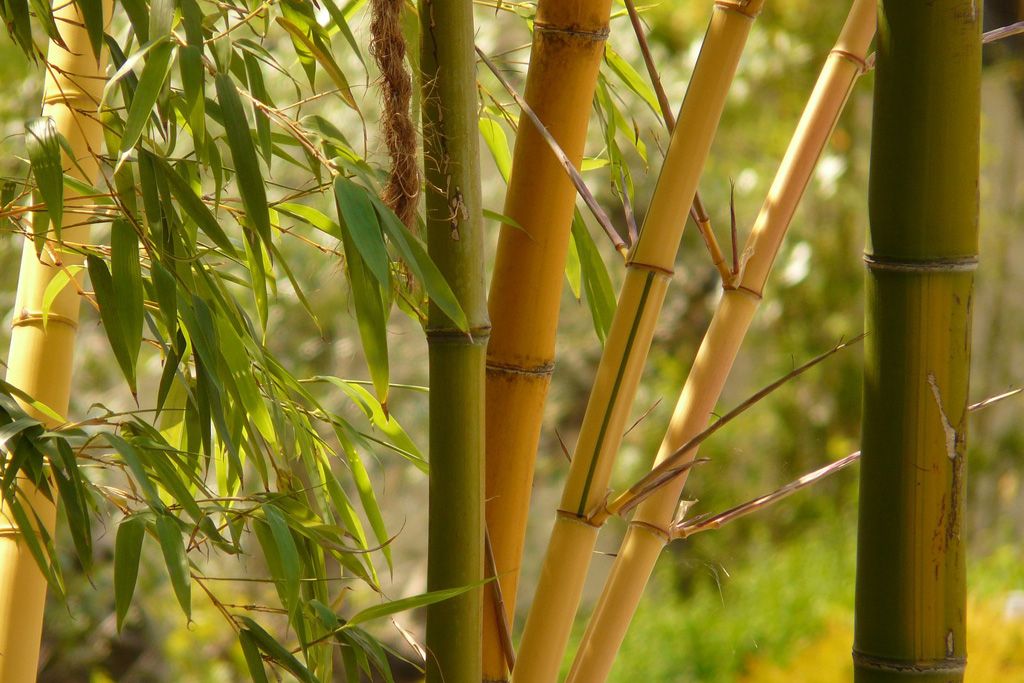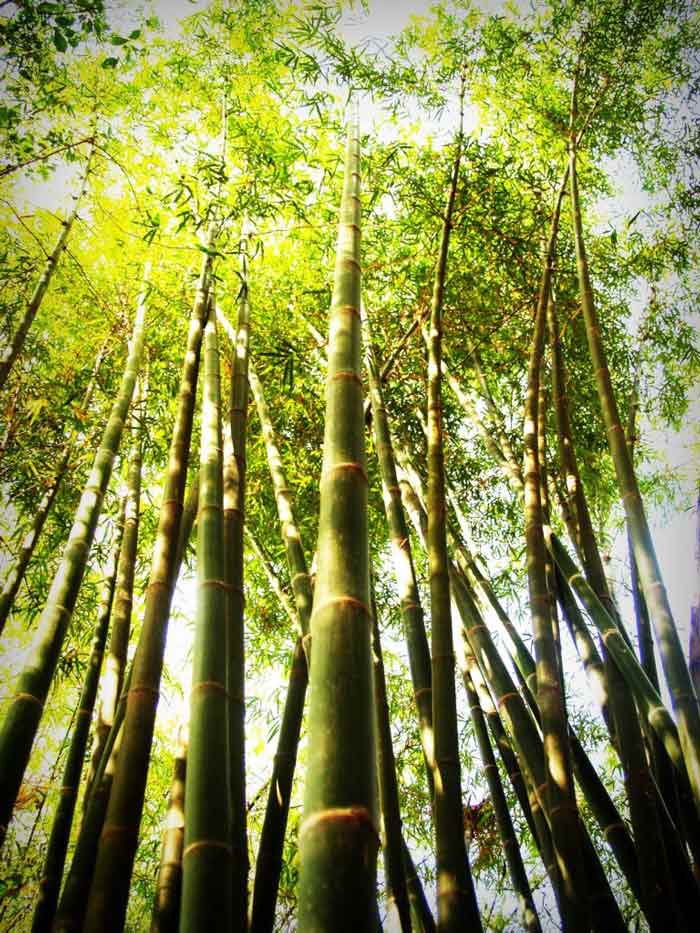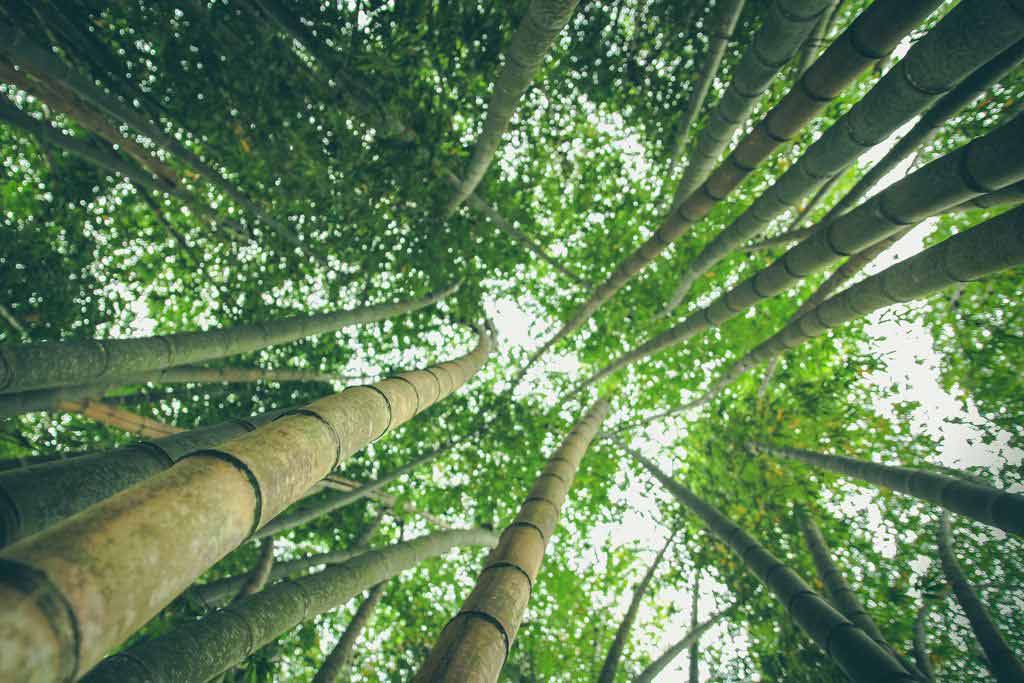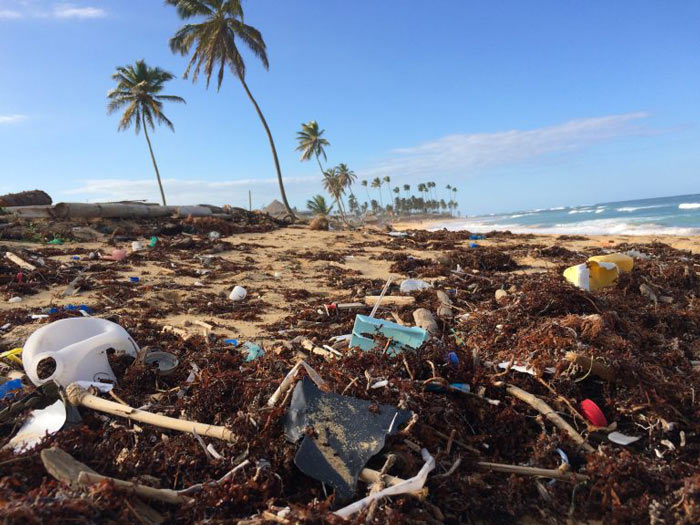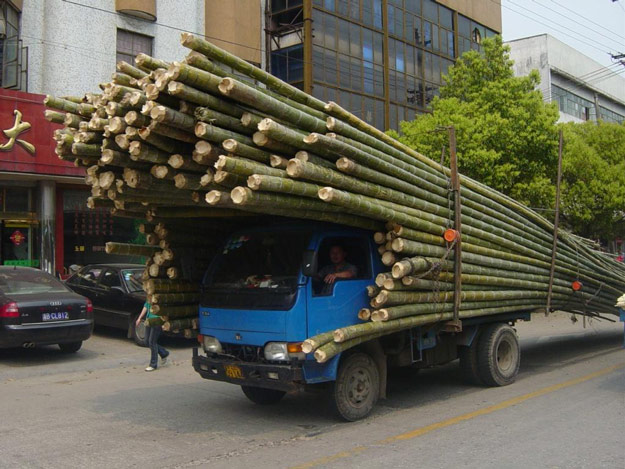Ambient Scholarship Award-Winning Essay by Ada Lian
Each year, Ambient is proud to provide financial assistance to a student enrolled in a two or four-year course of study at an accredited school in the U.S. This year’s winner, Ada Lian, is a student at Cornell University. Ms. Lian delved into the ability of bamboo to reduce man’s carbon footprint without reducing the quality of life. Her winning essay appears below.
The Ubiquitous Role Bamboo Has in Making a More Sustainable World
It is indisputable that the Earth has been suffering for decades and even centuries. The planet’s
average surface temperature has increased about 1.62 Fahrenheit since the late 19th century due
to the increased greenhouse gas emissions. According to NASA, the Greenland and Antarctic ice sheets lost an average of about 413 billion tons per year which consequently increased the sea level about 8 inches in the last century. As natural disasters have become more drastic and frequent, an average of 25.3 million people has been displaced each year since 2008. Although climate change has been discussed frequently, more needs to be done to raise awareness and combat the climate crisis. Consumers and businesses need to be more conscious of their carbon footprint – bamboo is a solution to reducing that footprint.
Bamboo is a grass plant that has about 1,200 species and occupies about 37 million hectares of
the total forest area of the world. It is considered one of the most sustainable resources because it
grows rapidly and requires less energy to treat compared to wood. A unique aspect that makes it stand out from other natural resources is that it can be used for a diverse range of purposes, from culinary uses to architectural uses. The multipurpose, rapidly growing bamboo provides a more sustainable substitute for other renewable and nonrenewable resources.
Culinary: Meat Production
For example, since antiquity, bamboo has been used for multiple purposes in Yunnan. The province of Yunnan is located in southwest China and has the most abundant bamboo forest in the world with about 250 species. Through conducting interviews with native inhabitants and carrying out field surveys, it is determined that of the 250 species, about 100 are edible and nutritious. In fact, bamboo shoots have many advantageous properties. For example, shoots have a high protein content (up to 15%), contain many vitamins and minerals, and have a low-fat content.
These advantages make bamboo shoots a suitable substitute for meat protein. It is evident that
bamboo shoots do not contain as much protein as meat products as the protein content in beef is
around two times the amount in bamboo shoots, however, the recommended dietary allowance is
only about 0.8 g of protein per kg per day. In fact, the National Health and Nutrition Examination Survey found that the average American male and female consume about double the daily recommended intake of protein. Producing meat protein such as beef and poultry requires more energy and emits more greenhouse gases such as methane. In fact, a regular diet has greenhouse gas emissions of about 3.88 kg CO2-equivalents per person per day, and a diet that consists of plant proteins drastically decreases the greenhouse gas emissions by 49.6 percent. By introducing bamboo shoots into one’s diet and reducing meat protein intake, one can reduce their carbon footprint caused by the production of beef and poultry.
Textile: Fast-Fashion
In addition to using bamboo for culinary purposes, bamboo is also implemented in the textile/fashion industry as a biodegradable material. Bamboo is known as the “green fiber” because it grows without the use of pesticides and fertilizers, it is in fact a more sustainable fiber than other eco-fibers such as cotton and hemp. Bamboo fabric is lightweight, strong, and has great moisture-wicking properties. This makes dying the fabric more time and cost-efficient than dying cotton. Unlike cotton, it does not need to be pre-treated with sodium hydroxide to increase the fabric’s luster and dye affinity.
Most importantly, bamboo fibers can help counter the waste and pollution generated by fast-fashion. Fast fashion brands frequently update their clothing products in-store in response to the ever-changing fashion trends, this consequently leads to a shorter life cycle of garments and more waste. According to a report by the Ellen MacArthur Foundation, the fashion industry will use up to a quarter of the world’s annual carbon budget by 2050. Additionally, the industry cuts down 150 million trees annually and a truck of clothes gets sent to a landfill every second. Bamboo fiber is a solution to the negative environmental impacts of fast-fashion because it is completely biodegradable and the decomposition process does not release any pollutants. Garments made from bamboo fibers are durable, making them last longer and at the end of the garments’ life-cycle, it will not contribute more waste to the Earth. Therefore, it is essential to introduce more eco-friendly fibers into the textile industry to raise consumer awareness and create timeless pieces that would last a lifetime.
Daily Uses for Bamboo
Carbon Sequestration
So far, bamboo products are only discussed in terms of being a sustainable substitute to minimize the amount of greenhouse gas emissions. Bamboo products can also be discussed in the context of carbon sequestration. Carbon sequestration refers to the storage of carbon in plants, soil, the ocean, et cetera that has the potential to become carbon dioxide. While combustion and decomposition release carbon from plant tissues, which combines with the oxygen in the atmosphere to create carbon dioxide, photosynthesis transfers carbon in the atmosphere to be stored in biomass and soil. Therefore, autotrophs such as bamboos are terrestrial carbon sinks as they retain carbon and prevent it from entering the atmosphere. A study was conducted to determine the role bamboo products play in carbon storage. The study took place in north-east India where bamboo sustains 70% of the rural workforce. The carbon storage of various bamboo products was measured by weighing and analyzing the samples collected.
The biomass and carbon stock in bamboo products for different communities are shown in Table 1. The result reveals that each household has between 196 to 517 kg of carbon dioxide in bamboo products annually. To put it into perspective, a gallon of gasoline has 8.887 kg of carbon dioxide and an average U.S. forest sequesters about 770 kg of carbon dioxide annually. It is impressive to see that a single household can sequester almost the same amount of carbon as an acre of forest. It is important to note that although there is a considerable amount of carbon stock in bamboo products, the maximum longevity of those products is five years because they are not pre-treated. To make bamboo products a long-term carbon sink, the community should apply post-harvest treatment to the bamboo to minimize deterioration and extend the longevity of the products. In general, preservative-treated bamboo can be used to make a diverse range of products such as baskets, containers, brooms, fishing devices, fans, trays, and so on to retain carbon for a long period of time.
Plastic Pollution
In addition to bamboo products being a carbon sink, they are also a solution to plastic pollution. Although plastic utensils and containers are most convenient to many, if a person gets a cup of coffee and lunch daily, that is already so much plastic waste annually from one person. With only nine percent of plastic that is actually recycled, microplastics end up in the ocean, soil, biota, and even the atmosphere.
This waste can easily be avoided if one uses reusable bamboo products instead. Plastic pollution is a global issue that mainly impacts poorer communities. Remote communities that do not have an established waste management system have to shoulder the impact of the plastic pollution crisis. Plastic waste impacts the health of marine life, which consequently impacts the qualities of fisheries, aquaculture, recreational activities, and tourism. This has an economic consequence with about $3,300 to $33,000 loss per ton of marine plastic annually.
Plastic pollution is an issue in underserved, remote communities due to their conventional purchase and disposal habits. In the coastal and remote Indonesian communities, the majority of the household goods are sold in single-use plastic sachets. Additionally, many households prefer processed, packaged foods over fresh foods because it is cheaper and more convenient. The result from the surveys conducted shows that 59% of the respondents think plastic waste should be burned, 3.8% think it should be buried, and 13.5% think it should be put in the ocean.
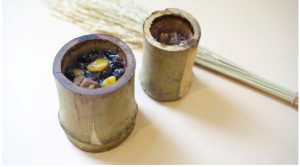
It is interesting to see that although 74.3% of the respondents know that burning plastic has a
negative impact on human health such as coughing and difficulty breathing, more than half of them still burn plastic for disposal. Poor waste management and lack of knowledge of the negative impact plastic has on the environment leads to excess waste and health concerns. Bamboo utensils and packaging may be an option to resolve plastic pollution in those communities. For example, rather than using single-use plastic sachets, bamboo segments and bamboo leaves can be used as options for food storage and transportation. This is already used in different locations such as Thailand. Thin strips of bamboo are woven together to make baskets called shalom and bamboo segments are cleaned and sealed with dried banana leaves to make a dessert called Khao laam.
Recently, there have been studies on how to use bamboo-based biopolymers to produce biodegradable food packaging. Ultimately, remote and underserved communities have to pay the social and economic costs of plastic pollution until they can effectively manage the plastic waste and explore different non-plastic alternatives. Bamboo can be an economically and environmentally sustainable alternative.
Bamboo in Architecture
As mentioned above, bamboo fibers are durable and strong, which also makes them a suitable
material for architectural use. Bamboo has high tensile strength, with the external layer bearing
up to 400 MPa–similar to the tensile strength of steel. This also makes bamboo an ideal material
for earthquake-resistant structures. For example, in 1991, twenty bamboo houses in Costa Rica
survived a magnitude 7.5 earthquake without any structural damage.
Reinforcement with Bamboo
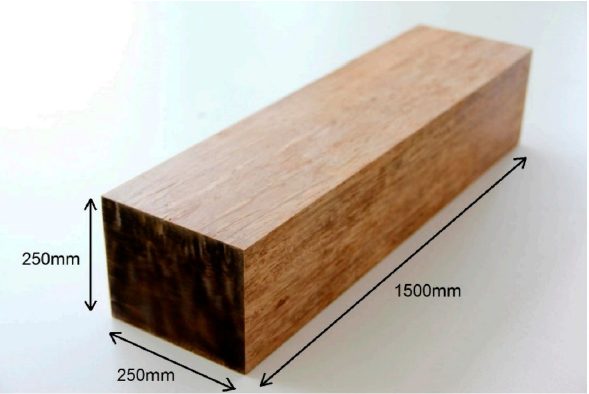
Reinforced concrete is commonly used in buildings and bamboo is a more natural, sustainable material compared to the more commonly used steel reinforcement. Steel is costly, takes a lot of energy to manufacture, and is susceptible to corrosion from concrete carbonation and exposure to other concrete elements. An alternative to steel is bamboo because of its tensile strength. Its reinforcement has been tested since 1914 but it was not successful due to the swelling and contracting of raw bamboo and degradation due to fungal and insect infestations. However, recent studies have been conducted to design a potential bamboo-composite reinforcement system that would overcome the challenges raw bamboo has. In one study, bamboo is boiled and dried in an air-circulated oven to make bundled bamboo fibers. After the fibers are dried, they are saturated with epoxy resin and placed in a hot-press compression molding machine. The image above shows the developed bamboo-composite material. Compared to the mean tensile strength of raw material (216-323 MPa), the tensile strength of the composite version is greater (346±25 MPa). To determine whether the bamboo composite material will still swell and contract like raw bamboo, 10x10x10 mm samples are immersed in water for three months and the weight is measured once a day. The results show that the samples only have a maximum water
uptake of about 0.5% of its weight. This study makes it evident that bamboo-composite material is a sustainable option to design low-cost housing for communities where steel is hard to obtain.
Flooring
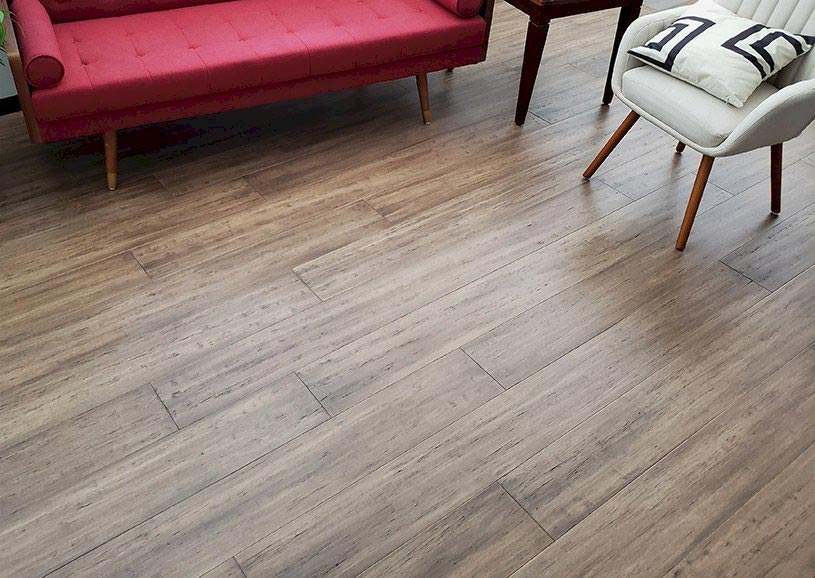
An aspect of bamboo flooring that makes it a good alternative to traditional hardwood flooring is that it is much harder, thus more long-lasting and more durable. As mentioned earlier, bamboo is a strong material, and when woven and compressed into strand woven bamboo, the material can withstand loads two to three times greater than the load wood flooring can withhold. Compared to hardwood flooring, bamboo and eucalyptus flooring are more sustainable options due to their rapid growth and durability.
An important proof of bamboo flooring that sets it apart from other flooring materials is that some brands voluntarily test their flooring for off-gassing, and ensure they comply with the Lacey Act as well as with the Toxic Substances Control Act. It is essential for the flooring to have minimal off-gassing because indoor pollutants, particularly volatile organic compounds (VOCs), can make the indoor air quality worse than outdoor air quality.
Sustainable Companies Today
It is delightful to see so many current and emerging sustainable companies that acknowledge their responsibility in minimizing society’s carbon footprint. It is important for companies to not just use the word “sustainability” for public relations and branding but also to make sure to hold their company accountable for being a sustainable brand. This is something that Ambient is doing a good job at currently. Ambient pays attention to how their bamboo is sourced as they comply with the Lacey Act which makes sure their raw materials are legally sourced and cause minimal damage to the environment.
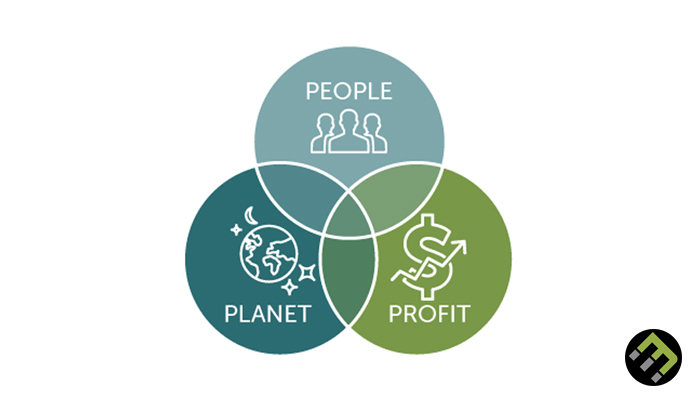
Another exemplary company that can be a model for any sustainable company is Patagonia. Patagonia is an apparel and gear company that uses its resources and platform to combat environmental stresses. What sets Patagonia apart from most sustainable companies is that they voluntarily admit the flaws of their company and take action in making a change. For example, they understand that their fleece products contribute to microfiber pollution so they commissioned a research project to investigate the quantitative impact their products have on the environment. They took further actions such as reaching out to their colleagues and competitors to initiate more discussions on microplastic pollution, discussing with appliances manufacturers to develop more effective filters, and supporting nonprofit organizations to spread awareness about microplastic pollution.
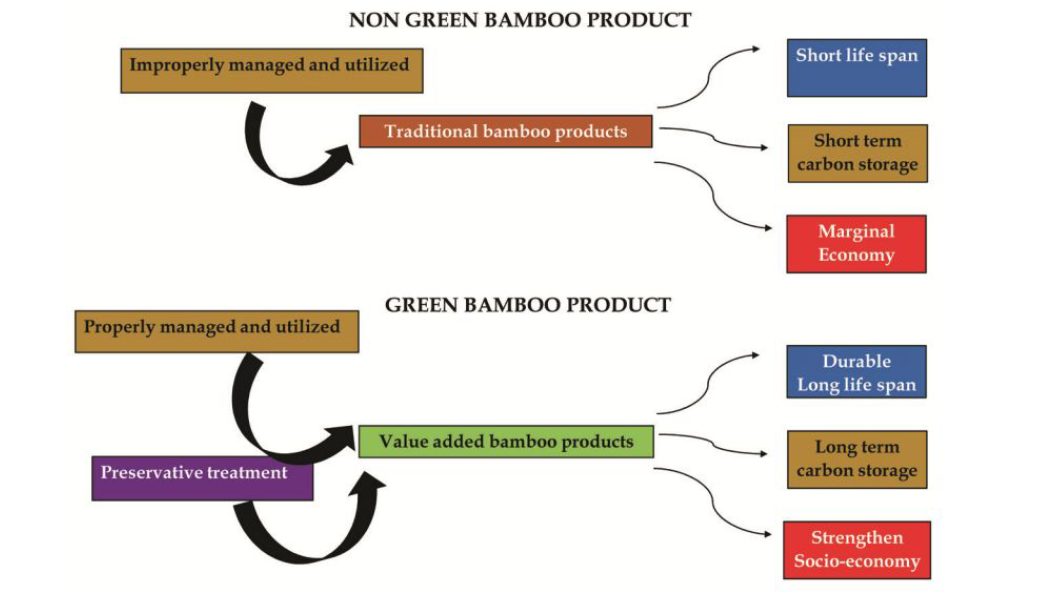
Although bamboo can be used for endless, diverse uses, it is the companies’ responsibility to
make the products as green as possible. Figure 3 shows the difference between green and
non-green bamboo products. For example, Ambient takes great care into ensuring that they
source their bamboo with minimal harm to the ecosystems and making their products last longer.
Potential next steps are designing eco-friendly packaging, studying other pre-and post-treatment
to extend the life cycle of these products, and supporting and working with low-resource
communities. Since antiquity, bamboo is a sustainable material that has diverse uses depending on the species and age. It is a renewable alternative to meat protein, synthetic fabrics, plastic household goods, and packaging, and nonrenewable construction materials. Bamboo is an essential raw material to combat the climate crisis and climate injustice, this makes it not only environmentally sustainable but also socially and economically sustainable.
Interested in the Ambient Scholarship? Plan now for next year’s scholarship. Applications and essays are due by September 1, 2021.

About the Author
Cheryl is our go-to guru for all things sustainable living. She’s on a mission to make your family and our planet thrive! With a heart as big as her passion for sustainability, Cheryl brings you the freshest insights on eco-friendly building products and energy efficiency. 🌱💡
And hey, did you hear about the eco-friendly lightbulb that went to therapy? It finally found its inner “enlightenment”! 😄 Join Cheryl on this green journey, where she’ll tackle your concerns with a smile and a sprinkle of eco-humor!

